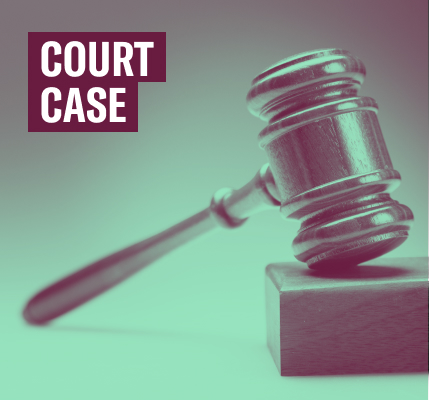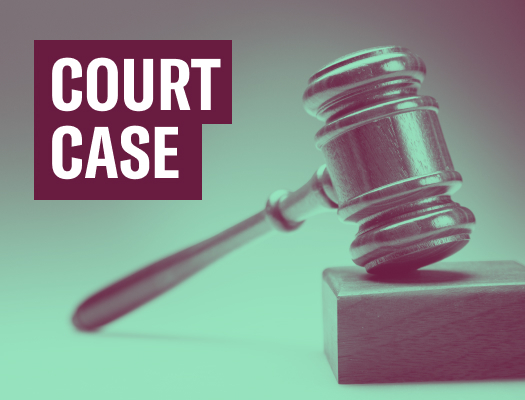Presidential nominating conventions enjoy icon status in American political culture. Images of intense floor fights, protests outside convention halls, vigorous intra-party debates over policies, platforms and strategies, and occasionally even physical confrontation — as when Dan Rather was famously punched while reporting from the floor of the 1968 Democratic Convention — have all traditionally symbolized the vibrant and sometimes disorderly and tumultuous clash of ideas that fuel any healthy democracy, and in particular serve as an important reminder of the fruits of the free speech and free assembly rights which the Founders guaranteed in the First Amendment. Conventions are, at least in theory, a once-every-four-years opportunity for Americans to assemble and debate critical issues as they select the standard-bearer for their political party.

But such democratic energy and free-wheeling political debate at conventions is now confined to the distant past, part of our national lore but not our current reality. For the last two decades, political conventions have become, by design, far more akin to meticulously choreographed television spectacles than democratic venues in which political disputes are vented and resolved. Inside the convention halls, spontaneous moments, let alone unscripted expressions of unapproved viewpoints, long ago ceased to exist. Those have been replaced by campaign-approved scripts, scheduled down to the last word and second in accordance with poll-tested themes and the prime-time television schedule.
During the last several nominating conventions, the areas outside the convention hall have become increasingly subject to the same degree of micro-control as events on the inside. With each convention, the physical area of extreme control expands to a larger and larger perimeter. Justified by resort to the same rationale used to suppress liberties in general — vague invocations of "security" — both political parties are now able to relegate dissent, protests and disruptions to unseen and highly controlled environments, far removed from the conventions themselves and far out of sight from delegates, political figures, and the establishment media outlets which televises the convention.
Any individual or group wishing to march or otherwise protest must -- long in advance -- obtain formal permission from city officials, who now routinely demand that protests be confined to areas far away from convention halls. Federal courts have increasingly deferred to alleged "security" concerns from municipal police departments in approving city-sponsored protest routes that are so far away from the convention action that they might as well be in a different city altogether.
Such routes are negotiated weeks or even months in advance in federal court proceedings between city officials, lawyers for the groups seeking to protest (often represented by the ACLU) and federal judges, who are almost uniformly sympathetic to the claim that the protesters’ First Amendments rights are fulfilled as long as they are "allowed" to assemble and protest at all, regardless of where that might be or how far removed it is from the convention (and thus how unlikely it is for their message to be heard). Courts have even regularly approved so-called "free speech zones" — glorified cages far removed from the convention halls where those with unscripted, dissident messages must remain upon pain of being immediately arrested. To describe the climate both inside and outside the convention hall as "sterile" — devoid of any traces of political passion or authentic dispute — is to understate the case.
These trends have been emerging for quite some, but when it comes to dissent-suppression, the events this year at both the Democratic Convention in Denver and the GOP Convention in St. Paul exceeded what had been seen before. In Denver, the security perimeter around the Pepsi Center, where the convention took place, was so large that older and mildly infirmed delegates had great difficult making the trek. One saw very little within a mile of the Pepsi Center other than heavily-armed and uniformed federal, state and local law enforcement agents; exhausted-looking delegates passively marching in line to the convention hall; and various VIPs being chauffered around in black SUVs with government-issued license plates.
Though there were large numbers of people protesting and disparate groups marching against the Democrats, it was actually difficult to find anyone doing so even if one was were deliberately seeking that out. That was how effectively any trace of dissent or disagreement had been suppressed for the entire week of the Democrats' convention.
Worse, outside private parties where top Democratic Party officials mingled with their largest corporate contributors, both Denver Police and private security officials worked in tandem to ensure that no interlopers were allowed anywhere near the festivities — including credentialed journalists seeking to report on with whom America’s most powerful political officials were meeting, and for what purposes.
But while Denver was sterilized, St. Paul was overtly militarized. Beginning the weekend before the GOP convention began, many private homes in the Minneapolis/St. Paul area were raided by machine-gun-wielding, inter-agency SWAT teams, who forced everyone in the targeted houses to lay on the floor in handcuffs while the homes were searched, with the agents carting off laptops, journals and political pamphlets. Lawyers and journalists who were already on the scene or sent there were handcuffed. Advocacy groups having nothing to do with any planned protests were plainly targeted for these pre-convention raids — most notably I-Witness, a group of videographers who had videotaped police action during the 2004 GOP Convention in New York and helped to compel the dismissal of many criminal charges against arrested protesters and had traveled to Minneapolis to do the same.
On the Sunday evening before the convention began, downtown St. Paul resembled the Green Zone in Baghdad far more than an American city. Brigades of law enforcement officers were, by design, extremely visible in the entire area near the GOP Convention, and were flamboyantly displaying their array of weapons, marching in military formation, and chanting. The tension and intimidation levels even before the Convention began were palpable, and the results — truly extraordinary even judging by the metrics of how militarized our police forces have become — were predictable.
During the week of the GOP convention, over 800 people were arrested, including many who manifestly were engaged in no violence or illegality of any kind. Dangerous weapons, including tear gas, concussion grenades, rubber bullets, and various explosive devices were shot into crowds indiscriminately. Many of those arrested were charged with felonies, including the extremely vague and previously unused "conspiracy to commit riot" charge. Some were even charged with a state statute, analogous to the federal Patriot Act, that could increase their ultimate sentence by many years. Numerous credentialed journalists were swept up in mass arrests on the street, including, most notably, Amy Goodman of Democracy Now, whose shocking arrest was videotaped as she sought to speak to a Police Supervisor regarding the arrests of two of her producers hours earlier. Associated Press and Fox News journalists eventually were swept up as well.
Though the establishment media largely ignored these extreme police actions as they were unfolding, The New York Times today — weeks later — finally got around to publishing a fairly detailed account of what took place, in an article headlined "Questions Emerge Over Police Conduct in St. Paul":
But questions are now emerging about the tactics that the police used to control the many rallies and marches that took place. Last Wednesday city officials appointed two former federal prosecutors to review the planning and strategies used by the police before and during the convention. . . .
Ultimately, more than 800 people, including about two dozen credentialed journalists, were arrested. Dozens more were handcuffed and photographed without being accused of any crime. And police officers in some instances used pepper spray, tear gas, bullets made of plastic and foam and flash grenades that exploded with a burst of light and a sharp bang. . . .
"It was an unprecedented show of police presence and display of force," said Bruce Nestor, the president of the Minnesota chapter of the National Lawyers Guild, which is defending many of those arrested. "Minnesota has never seen this level of militarization of local police" . . . .
During the convention, hundreds of officers wearing helmets with visors and armored vests and carrying long wooden sticks monitored large marches, some of which took place without a city permit. On at least three occasions the police fired 40-millimeter projectiles while dispersing or arresting the groups. Tear gas and pepper spray were used more frequently.
Some of those arrested said they were not participating in demonstrations, but were simply onlookers or journalists.
The climate created in St. Paul, plainly by design, was one of extreme intimidation. Whenever one was near any protests or even near the Convention hall itself, the thought constantly entered one’s mind that it was quite possible to be swept up in mass arrests or even be targeted with police force simply by virtue of one’s proximity to those events. That undoubtedly deterred many people from going anywhere near the protests, implicitly intimidating them into remaining meekly and quietly at home rather than make themselves heard.
Both in Denver and particularly in St. Paul, the level of police presence — more accurately, outright militarization — was something one does not expect to find in the United States. That is true even when one is quite conscious of the increasing militarization of our cities’ police forces, as a result of the recruitment of these forces into the nation‘s "War on Drugs" and, more recently, its "War on Terror." These were police state tactics finding their purest expression.
As a result, what was once one of the few living symbols of vibrant American democracy — the political convention — has now instead become a symbol of how precarious so many of our core constitutional liberties have become, how severely they have been eroded and continue to erode. There was a premium placed on extreme security measures and a clear intent to suppress as much as possible any form of true dissent, free speech or assembly. Party officials collaborated with public and private security officials to create a vast no-rights zone in or near the conventions, and that was enforced with a show of force and coercion that was as intimidating and extreme as it was blithely put into action.
The fact that it is no longer news to see hundreds of people, including lawyers, journalists and peaceful protesters being tear-gassed and mass arrested on American streets, outside of political conventions, may be the most noteworthy development of all. Constitution Day is designated for the commemoration of our core constitutional liberties, but what one observed at the 2008 Conventions raises the very real question of whether what is being commemorated is nothing more than a historic relic.



